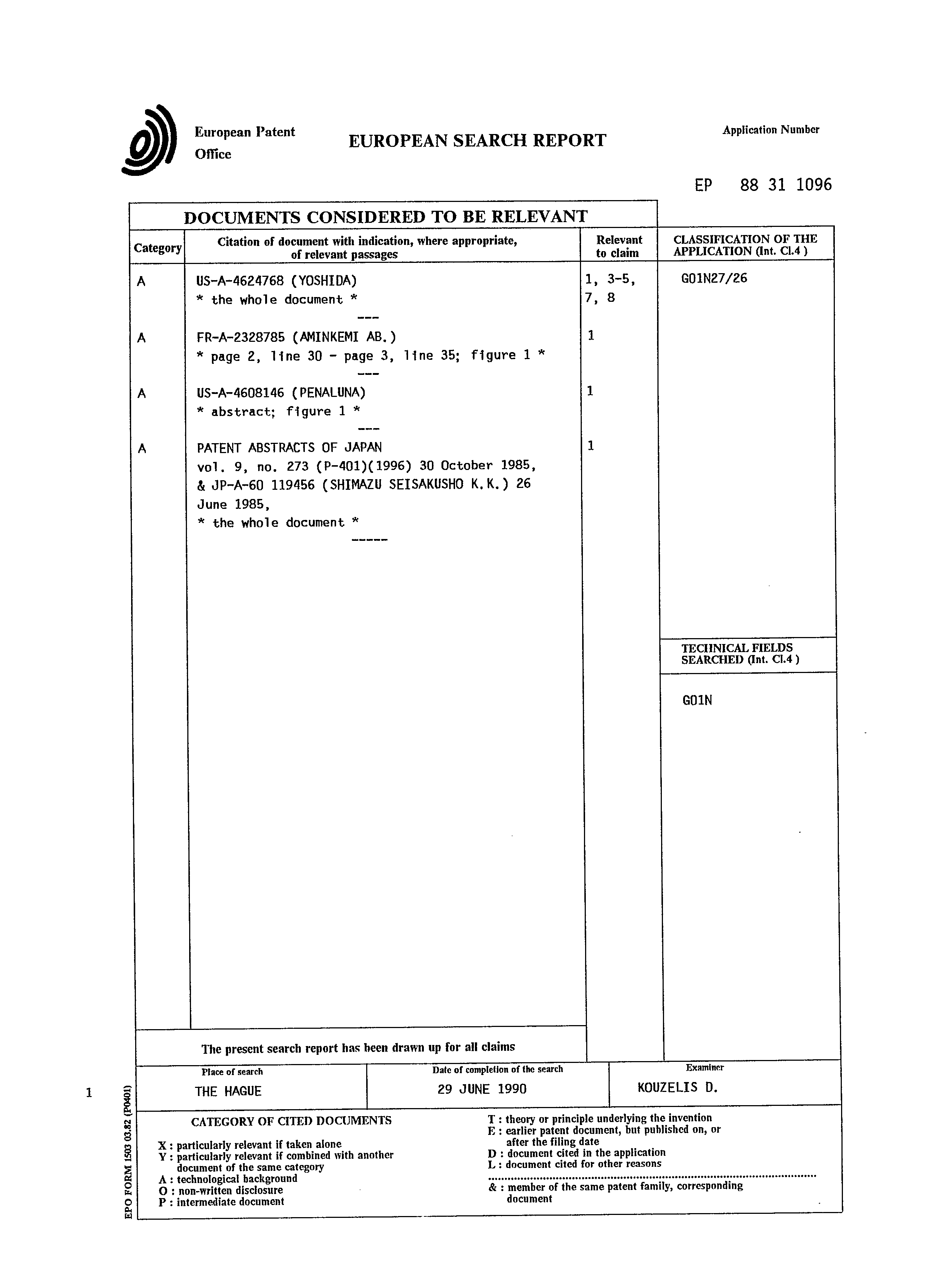| (19) |
 |
|
(11) |
EP 0 318 273 A3 |
| (12) |
EUROPEAN PATENT APPLICATION |
| (88) |
Date of publication A3: |
|
05.09.1990 Bulletin 1990/36 |
| (43) |
Date of publication A2: |
|
31.05.1989 Bulletin 1989/22 |
| (22) |
Date of filing: 23.11.1988 |
|
| (51) |
International Patent Classification (IPC)4: G01N 27/26 |
|
| (84) |
Designated Contracting States: |
|
CH DE FR GB IT LI SE |
| (30) |
Priority: |
25.11.1987 US 125539
|
| (71) |
Applicant: NORTHEASTERN UNIVERSITY |
|
Boston
Massachusetts 02115 (US) |
|
| (72) |
Inventors: |
|
- Karger, Barry L., Dr.
Newton
Massachusetts 02159 (US)
- Paulus, Aran, Dr.
No. 32 Boston
Massachusetts 02215 (US)
- Cohen, Aharon S., Dr.
No. 2 Brookline
Massachusetts 02146 (US)
- Nelson, Robert J.
No. 308 Boston
Massachusetts 02115 (US)
|
| (74) |
Representative: Chettle, Adrian John et al |
|
Withers & Rogers
4, Dyer's Buildings
Holborn
London EC1N 2JT
London EC1N 2JT (GB) |
|
| |
|
| (54) |
Integrated temperature control/alignment system for high performance capillary
electrophoretic apparatus |
(57) An integrated temperature control/alignment system for use with a high performance
capillary electrophoretic apparatus is disclosed. In one exemplary embodiment the
integrated temperature control/alignment system comprises a pair of capillary column
mounting plates for mounting a capillary column as a constituent of the electrophoretic
apparatus, a pair of secondary support plates, a pair of thermoelectric plates and
external heat sink plates. Detection openings are formed in each of the plates as
required so that a continuous detection path exists through the integrated temperature
control/alignment system. The capillary column is seated and locked in grooves formed
in the capillary column mounting plates so that the detection windows of the capillary
column are coordinated with the aligned detection openings formed in the applicable
plates of the integrated temperature control/alignment system. The temperature of
substantially the entire capillary column, including the detection zone, is controlled
or regulated by the temperatures of the thermoelectric plates which comprise one or
more thermoelectric circuits utilizing the Peltier effect. Regulation of current flow
in the thermoelectric plates controls the temperature effect exerted by the thermoelectric
plates, thereby controlling both the direction and rate of heat transfer with the
capillary column.

